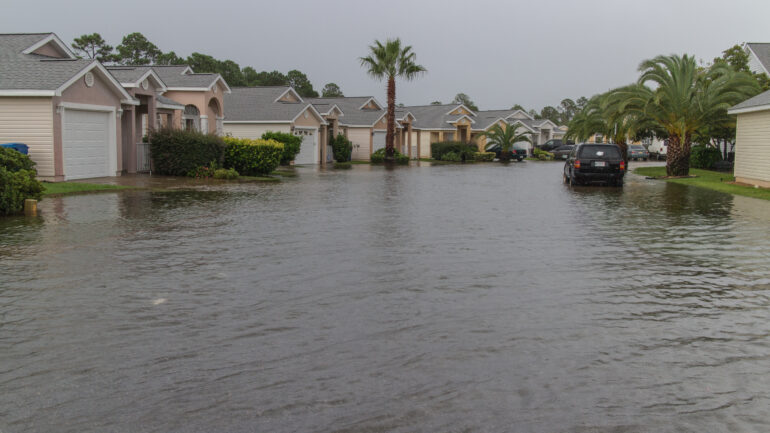Written by Huang-Nam Vu, Staff Writer for Save The Water™ | January 27th, 2018
The term “endocrine-disrupting chemical” (EDC) has been widely discussed in recent years, yet the exact definition of the term remains disputed. Also known as “endocrine-disrupting contaminants,” EDCs can be loosely defined as any substance that interferes with the endocrine system. The endocrine system is made up of glands located throughout the body, hormones that are made by those glands and released into the bloodstream to various organs, and tissues that recognize and respond to those hormones.1 As a result, interference with the natural process of this body system can have major implications on the health of the affected organisms.
The effects of endocrine disrupting chemicals on the endocrine system on human development
In the human body, hormones play major roles in body development, including metabolism, sexual function and reproduction, and even mood. Thus, even minor changes in the endocrine system can have massive implications for the body as a whole. Depending on the concentration of the EDC, these implications can include malformations in development, interference with reproduction, increase of cancer risk, and disturbances in the immune and nervous system function.2 Young people, in particular, can suffer greatly from significant exposure to EDCs, given the importance of the endocrine system while the human body develops the most. Although the effect of exposures to EDCs may not become evident until later in life of their offspring, pregnant mothers are also especially vulnerable to exposure. Later in life, these effects include a possible increase for the offspring in susceptibility to non-communicable diseases.3
Pharmaceuticals, Pesticides, and Some Natural Substances Are Examples of Endocrine Disrupting Chemicals
Pharmacies nationwide shelve some examples of EDCs. Therefore, some people consider EDCs innocuous because they inherently disrupt the endocrine system. As examples, EDCs include birth control, which intentionally disrupts the endocrine system’s role in sexual reproduction, as well as prescribed hormonal therapies. In addition, some natural substances, such as soy and beta-sitosterol (a chemical found in all plant foods), also have hormonal effects. Still more EDCs are widely acknowledged as detrimental to wildlife, albeit not necessarily and obviously as an endocrine disruptor, like DDT and DDE. DDT and DDE plagued the agricultural community and instigated a wide range of environmental problems across the United States.
In particular, bisphenol A may be one of the highest-profile endocrine disruptors and is found in food and beverage containers and the linings of tins and jar lids. But people are regularly exposed to various synthetic chemicals used as industrial solvents/lubricants and their byproducts. These byproducts include polychlorinated biphenyl (dioxins), plasticisers (phthalates), pesticides (DDT), fungicides (vinclozolin), and pharmaceutical agents (diethylstilbestrol).4 People risk exposure to these chemicals in places spanning from farms (pesticides) to bathrooms (antibacterial soap and hand wash, toothpaste) and the kitchen (Teflon in non-stick cookware, fast-food paper wrappers/containers).4
A certain impact of endocrine disrupting chemicals on wildlife
Regardless of the implications EDCs have on the human body, the significant impact of EDCs on wildlife is unquestionable. While current standard test methods do not provide adequate data to identify potential endocrine disruptors or to assess their risks to humans and wildlife, scientists have conducted laboratory studies. As a result, the scientists have proposed that exposure to a variety of chemicals is likely to be associated with adverse developmental and reproductive effects on fish and wildlife in particular locations.2 As a key takeaway, endocrine disruptors also function in the body in a wide range of ways.
For example, some chemicals mimic a natural hormone. Thus, they fool the body into over-responding to the stimulus or responding at inappropriate times.3 Therefore, this can disrupt the release of insulin, a hormone central to the human metabolic process, or the production of human growth hormone. Some endocrine disruptors block the effects of a hormone from certain receptors, while others directly stimulate or inhibit the endocrine system.2
Endocrine Disrupting Chemicals Have Hurt the Florida Everglades
A notable example of an area of wildlife negatively impacted by EDCs is the Everglades. A World Heritage site located in Florida, Everglades National Park “protects an unparalleled landscape that provides important habitat for numerous rare and endangered species like the manatee.”8 In particular, EDCs have harmed alligators in the Everglades. Numerous studies have examined populations of the American alligator as a sentinel species–indicators of health threats to humans – as well as a microcosm of wildlife in the Everglades as a whole, since the early 2000s. For example, a study from 2000 identified “neonatal and juvenile alligators living in pesticide-contaminated lakes as having altered plasma hormone concentrations, reproductive tract anatomy and hepatic functioning.”10
Furthermore, experimental studies involving the exposure of developing embryos to various persistent and nonpersistent pesticides have produced alterations in gonadal steroidogenesis, secondary sex characteristics and gonadal anatomy. Thus, these studies verify a significant impact of pesticides (and, perhaps, EDCs as whole) on these species, especially in their earliest stages of their lives.10 For example, a study from 2008 outlined “contaminants as causal agents of abnormalities in gonadal steroidogenesis and in reproductive tract development.”11 Additional studies on these alligators can apprise us of environmentally induced defects that emerge as a result of exposure to a wide array of EDCs, as well as help us understand the developmental consequences of endocrine disruption in wildlife and the consequences of exposure during the most sensitive life stages of wildlife.
Challenges in defining and regulating EDCs
Due to the prevalence of EDCs, the international community has hotly debated how to define EDCs. In July 2017, the “scientific criteria determining hormone-disrupting chemicals used in pesticides and biocides was adopted by EU member state representatives sitting in the European Commission’s Standing Committee on Plants, Animals, Food and Feed.”5
However, a great deal of contention marks this event. For example, EDC-Free Europe, a coalition of more than 70 environmental NGOs, found, “The criteria require a very high burden of proof, which makes the identification of substances as EDCs very difficult and is likely to result in long delays.”5 Furthermore, some have questioned the consistency by which these new protocols define EDCs. For example, Andreas Kortenkamp has described the new protocols as “placing the burden of deciding how to regulate endocrine-disrupting chemicals onto the assessors on a case-by-case basis.” 6 As a consequence, this will likely lead to inconsistency based on the total variance in how high the bar is set in order to declare something an endocrine-disrupting chemical.6
Additionally, economic consequences put into question outlawing the wide range of EDCs that we use every day. For example, glycophosphate is the world’s most popular weed-killer. This chemical is heavily associated with RoundUp. Some have questions glycophophate as an EDC. But many argue that outlawing other chemicals, such as glyphosate, or other substances like Telfon, to name just one, would have disastrous economic implications.5
References:
- Matthew R. Milnes and Louis J. Guillette, Jr.. December 1, 2008. “Alligator Tales: New Lessons about Environmental Contaminants from a Sentinel Species.” BioScience, 11 (58), 1027–1036. https://academic.oup.com/bioscience/article/58/11/1027/264454
- United States Environmental Protection Agency. January 24, 2017. “What is the Endocrine System?” https://www.epa.gov/endocrine-disruption/what-endocrine-system
- United States Environmental Protection Agency. February 22, 2017. “What is Endocrine Disruption?” https://www.epa.gov/endocrine-disruption/what-endocrine-disruption
- World Health Organization. 2018. “Endocrine Disrupting Chemicals (EDCs).” http://www.who.int/ceh/risks/cehemerging2/en/
- Karina Bray. July 28, 2014. “Endocrine-disrupting chemicals: Which common chemicals have been linked to cancer and reproductive abnormalities?” Choice. https://www.choice.com.au/health-and-body/beauty-and-personal-care/skin-care-and-cosmetics/articles/endocrine-disrupting-chemicals
- Frédéric Simon. July 5, 2017. “EU experts agree on criteria for endocrine disrupting chemicals in pesticides.” EURACTIV. https://www.euractiv.com/section/energy-environment/news/eu-experts-agreeoncriteria-for-endocrine-disrupting-chemicals-in-pesticides/
- Arthur Neslen. June 16, 2016. “New rules to regulate Europe’s hormone-disrupting chemicals.” The Guardian. https://www.theguardian.com/environment/2016/jun/16/new-rules-to-regulate-europes-hormone-disrupting-chemicals
- European Parliament. December 10, 2017. “Endocrine disruptors: people’s health must come first.” http://www.europarl.europa.eu/news/en/headlines/society/20171009STO85663/endocrine-disruptors-people-s-health-must-come-first
- National Park Service. October 13, 2017. “America’s Everglades – The largest subtropical wilderness in the United States.” U.S. Department of the Interior. https://www.nps.gov/ever/index.htm
- Amber Pariona. April 25, 2017. “What Is A Sentinel Species?” WorldAtlas. https://www.worldatlas.com/articles/what-is-a-sentinel-species.html
- Louis J. Guillette, Jr., D. Andrew Crain, Mark P. Gunderson, Stefan A. E. Kools, Matthew R. Milnes, Edward F. Orlando, Andrew A. Rooney, Allan R. Woodward. August 1, 2015. “Alligators and Endocrine Disrupting Contaminants: A Current Perspective.” Integrative and Comparative Biology, 3 (40), 438–452. https://academic.oup.com/icb/article/40/3/438/379945





